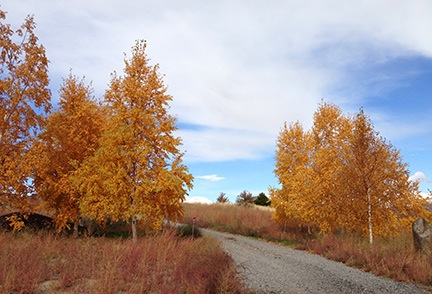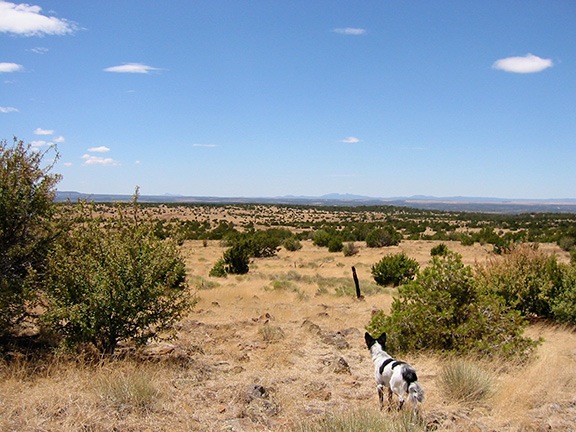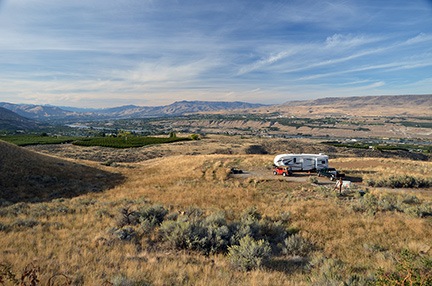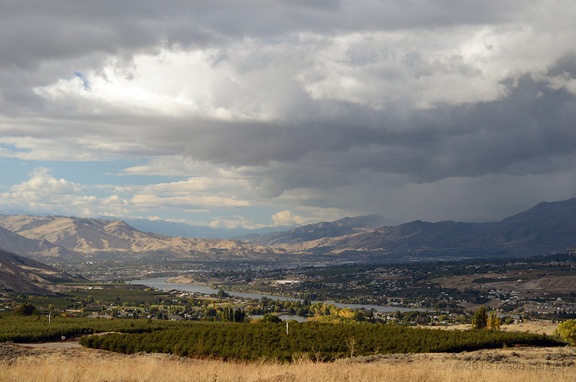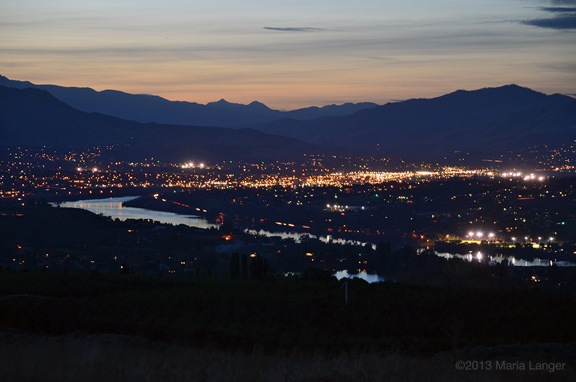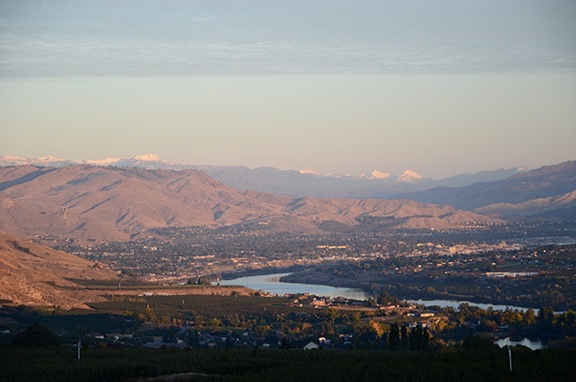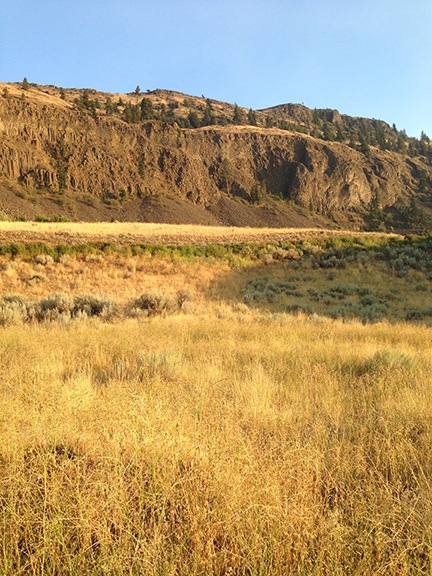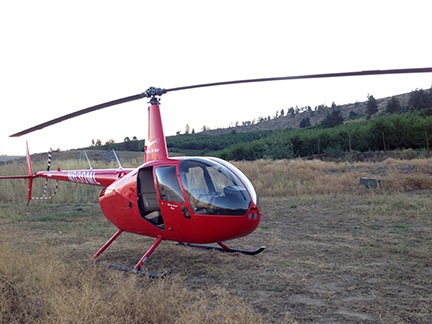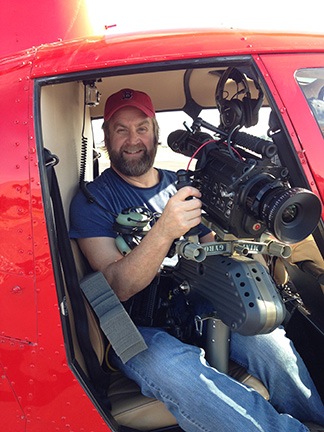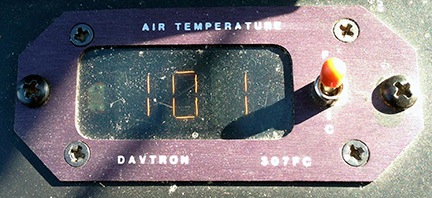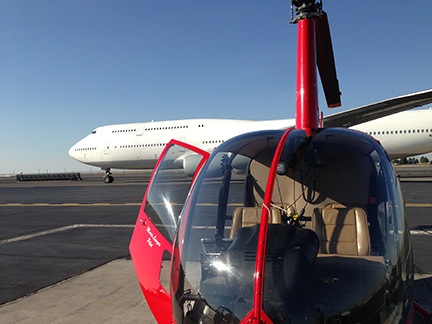Planned, executed, and enjoyed.

Wenatchee is nearly due east of Seattle. Malaga is under the “c” in Wenatchee on this map. The numbers mark the three passes over the Cascades between Malaga and Seattle: (1) Blewett (Rte 97), (2) Snoqualmie (I-90), and (3) Stevens (Rte 2).
I live in Malaga, WA, a small farming community on the outskirts of Wenatchee on the Columbia River. Although the small city Wenatchee offers just about everything a person needs on a daily basis, some things are only available in big cities. The closest big city is Seattle, 145 road miles away.
As I did when I lived in the Arizona town of Wickenburg — which had far less to offer than Wenatchee — I would often wait until I had multiple big city tasks to complete before planning a trip and getting those things done. Phoenix was closer to Wickenburg and I went there more often. (I actually lived there for a while during the 2011/2012 winter season; I was not very happy, despite the convenience.) Seattle, a three hour drive away, isn’t the kind of place I’d zip off to on a whim or to chase down a needed computer component or decent restaurant meal. (And it certainly isn’t the kind of place I’d want to live — too much cloudy weather!)
But as time went by, I accumulated “excuses” for a day trip to Seattle. I needed to get the battery on my iPhone replaced (under warranty) at an Apple store before November month-end. I wanted to buy cross-country skis without spending the $600+ dollars it would cost me locally for a setup. I was interested in meeting up with some like-minded people in one of the many Meetup groups based in Seattle.
On Saturday morning, a Meetup group notice in my email inbox spurred me to action. One of the groups that interested me was gathering for a weekly hike around Green Lake in Seattle followed by lunch at a local dog-friendly cafe. The hike would be at 11 AM on Sunday. I had nothing else on my calendar for that day. Within minutes, I was planning my day trip.
The Plan
The plan would start at REI’s flagship store on Yale Avenue North, right off I-5. I’d already done some online shopping and found a good deal on cross-country skis, boots, and poles that would save me $200 off what I’d pay locally. (I like to support local businesses with my shopping dollars, but I simply can’t swallow the extra cost these days.) I called the store and had them put the skis on hold for me. The store opened at 10 AM and it would be my first stop.
Next was the hike. That started at 11 and all I needed was the address for the meeting place, the stadium at Green Lake.
I’d finish up with a stop at an Apple Store. A quick search showed me one near the hiking destination, in a place called University Village. I went onto their web page to set up a Genius Bar appointment. I gave some careful consideration to the appointment time. I didn’t want it to be too early, forcing me to cut my time with the meetup folks. But I didn’t want it to be late, forcing me to drive home in the dark with possibly bad weather on the way. Finally, I chose 3:20 PM from the available times.
I then called Apple support and had them pull up the notes on my iPhone case. I wanted to make sure the there was no question about them replacing the faulty battery. I was assured that there would be no problem getting it done while I waited.
I entered all of these items into my calendar as events, making sure I included street addresses. When my calendar synced with my phone and iPad, I’d have them handy throughout the day.
The Drive
There are basically three ways to get to Seattle from Wenatchee.
- The shortest route (time-wise) takes me north through Wenatchee onto Route 2 west with a turn onto Route 97 south. Route 97 is a relatively narrow, winding mountain road that crosses Blewett Pass at 4,102 feet. The road then descends down to Cle Elum, where I’d turn onto I-90 west. That’s a major freeway that winds up through the mountains and crosses at Snoqualmie Pass at 3,022 feet. After that, the road descends right down into Seattle, just a tiny bit south of center city. This is the route that most mapping apps and GPSes suggest.
- The shortest route (distance-wise) takes me north through Wenatchee onto Route 2 west and stays on Route 2 through Stevens Pass at 4,061 feet. Route 2 is a winding mountain road and, although it’s a beautiful drive, it seems amazingly long.
- The longest of the three main routes goes southeast from Wenatchee through Quincy to George where it picks up I-90. From there, it heads west through Ellensburg and Cle Elum, over the mountains at Snoqualmie Pass at 3,022 feet and down into Seattle.
Although I dislike driving on freeways, this was not a pleasure drive. I had a need for speed to make the most of my day in Seattle. In addition, winter weather advisories for the Cascade Mountains made it likely that snow would be falling overnight and possibly on Sunday morning. My experience driving in snow is limited — after all, I lived in Arizona for the past 15 years — and I wasn’t interested in a thrill ride. The way I saw it, the better the road over the mountains, the more likely it would be clear of snow and ice. So I chose the longest of the three ways, adding about 40 miles (but theoretically only 15 minutes) to my one-way drive.
(By the way, in case you think I’m over-reacting to a little weather on my drive over the mountains, consider the fact that WDOT has a whole section of its website dedicated to mountain passes. You can access live webcams, condition information, and restrictions 24/7/365. Indeed, when I was chatting later in the day with various Meetup members, two of them asked me about pass conditions when they heard where I’d driven from.)
I had to take my truck. Cross-country skis would not fit in my Honda S2000 with the top up and top-down driving was not an option with mountain temperatures in the 30s and a real chance of rain or snow. Although the skis might have fit in my Jeep, it’s a soft-top and can’t be secured. I didn’t want those skis disappearing out of my Jeep while I was on my hike or in the Apple Store. So my truck was the obvious choice. It gets decent mileage for a truck (about 15-18 mpg highway) and is comfortable to drive. It also has new all-weather tires.
I packed some emergency gear just in case I got stuck on the road: a blanket, some non-perishable food, some water. I already had tow-straps and emergency reflectors on board. (Note to self: buy flares.) I really didn’t know what to expect and wanted to be prepared.
By 7 AM, on Sunday morning, I was ready to go. The sky was just brightening and the full moon was illuminating the world around me where it broke through the clouds. The weather forecast called for good weather in Wenatchee and I had a few second thoughts about my trip to Seattle. After all, the weather forecast for that area was cloudy with a 40% chance of rain and a high of 50°. Not very pleasant. If I stayed home, I could get some work done in the yard.
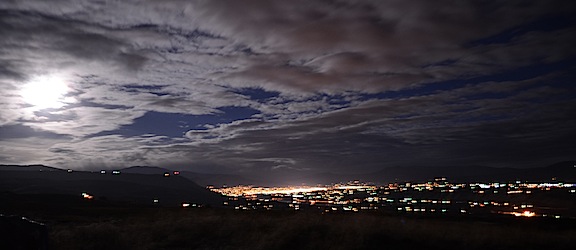
I snapped this photo right before I left on my day trip to Seattle.
But I was really looking forward to getting things done in Seattle. So I put Penny’s coat on her and bundled her into the truck. A while later, we were on our way south. I had my phone connected to the truck stereo with MapQuest giving me directions and updated ETA info and Downcast playing podcasts from NPR.
There was weather in the Colockum west of Quincy. I’d been flying in that area just a few days before, on a wildlife survey flight. Low, fog-like clouds engulfed the hills and canyons offering glimpses of fresh snow. I thought about flying over the area later in the week and hoped I’d get the opportunity.
It didn’t start drizzling on us until we were on the freeway heading west, just getting close to Ellensburg. The sky was gray with a low overcast. The windmills appeared out of the gloom, rotating slowly as I passed them.
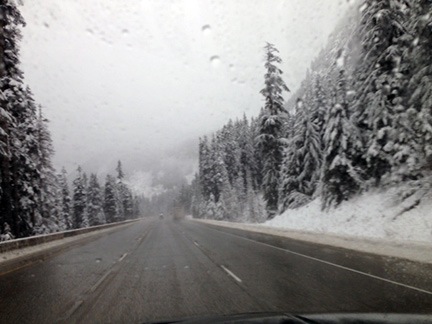
Despite the gray, the thick snow in the pine trees made the scene beautiful.
As we climbed through Cle Elum, I saw the snow level not far above us. Soon there was snow on both sides of the road. The speed limit dropped from 70 to 55. Signs warned about slush on the roadway. Then the speed limit dropped to 45 as we climbed to the pass. The snow was thick on the pine trees and the road was wet with small piles of snow on the shoulders.
It was a non-event, really. The roads were not slippery and there were so few vehicles on the road that the going was easy. Soon we were past the pass and headed down toward sea level. The snow disappeared and even the rain let up a lot. It was a mere drizzle by the time we turned onto I-5 for the last two miles of our trip to Seattle.
REI Flagship Store
REI is a major retailer for outdoor sporting goods for active people — gear for hiking, camping, skiing, paddling, etc. They have locations all over the U.S. I know them from my New Jersey days, but also occasionally visited their Phoenix locations — especially the last year I was in Arizona, when I had become a lot more physically fit and active.
Although REI is not the cheapest source for sporting gear, it is one of the best. They carry good quality equipment at a fair price and have knowledgeable and helpful sales staff. Articles on their website, such as this one about choosing cross-country skis, are extremely helpful when making a purchase decision. They offered a discount on complete ski packages — which I needed — and were having a sale.
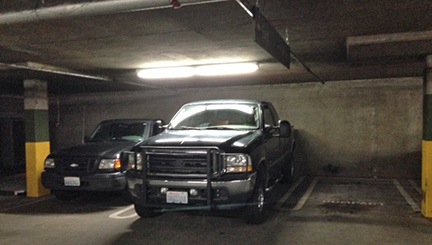
If it fits in a “compact” spot, it’s a compact vehicle, right?
With some difficulty, I maneuvered my pickup into the underground parking lot beneath the building. It was 10 AM when we arrived and cars were just pulling in. Because I foresaw the possibility of a difficult drive out of the lot once it was full, I backed my truck into a spot with a clear drive out. It wasn’t until after Penny and I left that I realized the spot was marked “Compact.”
I took Penny for a walk around the block. It was then that I realized what a neat facility I was at. Not only did they have a huge rock-climbing wall in the front of the store, but there were mountain bike and hiking trails for testing out equipment. The waterfall was a nice touch, too. Sure did drown out the sound of the nearby freeway, anyway.
I put Penny back in the truck and went in to take care of business. There was only one guy in the cross-country ski department and he was waiting on 5 people. He took a moment to pull my skis out of the hold area between helping other people and I tracked down the right length poles and style of boot. Eventually, it was my turn and he fetched the boots in my size. My luck: they didn’t have the boots on display in my size. Instead, they had last year’s model which were comparable but $25 less. They fit perfectly.
I want to take a moment to comment on how different cross-country skis are now compared to when I first began cross-country skiing in the 1980s. Back then, there weren’t many options; the sport wasn’t terribly popular. Nordic skiing hadn’t caught on yet. You’d buy skis strictly on the basis of your height. Boots weren’t boots — they were shoes that didn’t even cover your ankles.
Nowadays, you choose skis based on the type of skiing you want to do and your level of expertise. Sizes are based on the type of skiing, level of expertise, and weight of the skier. Boots are boots — they cover your ankles — and rather than rely strictly on laces, they close up with a combination of laces, zippers, and velcro. (No chance of my feet escaping by accident.) I have no idea how the prices compare; I can only assume they’re more costly. I spent $320 on my complete setup, including tax. But because I went with decent-quality intermediate level skis, I’m certain they’re the last skis I’ll ever need to buy.
Although I’d wanted to spend a little extra time looking at outdoor clothing, I had no time left. I reasoned that I could buy clothes locally and probably save some money if I kept an eye out for sales and closeouts. So I tucked my skis and poles under my arm, grabbed my box of boots, and headed back out to the truck.
Hiking with Strangers at Green Lake
I started hiking with Meetup groups last autumn when I returned to Arizona for my last winter there. I was very fortunate to find the Phoenix Atheist Meetup Group, which does weekly hikes on Sundays. It was a real pleasure to get out with a group of friendly, educated, and intelligent people. I blogged about it last November.
Although I love hiking around the Wenatchee area, I miss the group hikes I enjoyed all last winter in Arizona. So I was very pleased to find that the Seattle Atheists/Agnostics Meetup Group also did hikes, including a weekly Sunday hike around Green Lake.
I should mention here that I prefer hiking in a variety of locations. A 3-mile hike on a paved trail around a lake in a city park didn’t really excite me. I like a longer hike in more varied terrain with lots of new and different things to see and enough challenge to work up a little sweat. What got me interested in going on this hike was meeting new people and hiking in a new place. But if I lived in Seattle, I seriously doubt whether I’d show up for weekly hikes at the same venue.
I used the Maps app on my iPhone to get directions to the park. It was only a few miles away. Penny and I pulled up exactly on time. I parked and locked the truck, put Penny on her leash, and went in search of about a dozen strangers.
I found a likely group of eight or so people standing beside the pathway, chatting. “Is this the Meetup group?” I asked someone.
A man replied. “Yes.”
Remembering one Sunday the previous November when I’d run into three different Meetup Groups meeting in the same place, I asked, “Which one?”
“The godless ones,” he replied with a grin.
I gave him a big thumbs up. “I’m in the right place, then.”
More people came and we introduced ourselves quickly by name. The organizer announced that they wouldn’t be having lunch after the hike because most of the members were going to an exhibit at the Seattle Art Museum afterwards. They we set off on a walk counterclockwise around the remarkably round lake. I fell into place beside two men and we immediately got to chatting about various things.
The pathway was paved with a line down the middle separating the walking path from the biking path. Both were full. So was the gravel path on the inside of the curve. Lots of walkers and bikers and joggers and dogs. Penny was not well behaved and I had to keep her on a short leash. Over-stimulated, one of my companions said and I agreed. She likes to bark and chase other dogs, anyone moving faster than a walk, and bicycles. That accounted for about 75% of the people around us.
The weather held and even improved. Although it was somewhat windy, the wind wasn’t strong enough to be an issue. It put waves on the lake; ducks sleeping on the water with their beaks tucked under their wings bobbed up and down. A sole kayaker, looking odd in a life vest with a sweatshirt under it, paddled around. Overhead, the clouds whizzed by, offering the occasional glimpse of an airliner on final approach to SeaTac.
Later, the hike organizer joined us. The conversation turned to the topics that concern atheists, such as separation of church and state. We shared opinions on Bill O’Reilly, Rush Limbaugh, and Jon Stewart. It was refreshing to talk about these things with like-minded people. Like Arizona, Washington state outside the Seattle area is very conservative and few people I know share my views on these things. I’ve learned not to talk about them until I know where my companions stand. Conservatives in the U.S. tend to be steadfast in their beliefs and will rabidly defend them to the point of offending those who don’t agree. Life’s too short to deal with that crap. That’s why I enjoy the company of a more liberal crowd who can at least debate a topic intelligently with an open mind.
We did the 3-mile walk — I can’t honestly call it a hike — in almost exactly one hour. Members of the group said their goodbyes to hurry off to the museum. I asked my companions if anyone was interested in getting a bite to eat. Several were. I dropped Penny off in the truck, grabbed my wallet, and joined them for a walk one third of the way back around the lake. I paired up with another man, a retired hospital administrator who was thinking of relocating to Ecuador. We talked about that and my career as a writer. There was a Peet’s Coffee shop just outside the park and we went in for coffee and breakfast pastries.
We hung out for nearly two hours, talking about all kinds of things: flying, women’s roles, navigation, health care, the U.S. budget, war, etc. Everyone with an opinion shared it based on facts. There were no crazy, radical opinions. Even when one of us didn’t disagree, we discussed it calmly, with no temper tantrums.
And they kept me honest. When I mentioned that defense accounted for half the U.S. budget, one of my companions said that couldn’t be right. I used my iPhone to pull up my source for that information on the Washington Post website and he was right. Defense accounted for nearly as much as the top expense item, Social Security, but not half the budget. I should have more accurately said that it was the second highest expense item after social security or that it and social security combined accounted for nearly half the budget. I admitted my error — mature, self-confident people are not afraid (or ashamed) of admitting mistakes — and the discussion continued without prejudice. In this day and age, people are so willing to accept “facts” as they are presented; it was refreshing to be challenged. It told me that the people I was dealing with were smart, informed, and not afraid to get the facts in a conversation.
How could I not like that?
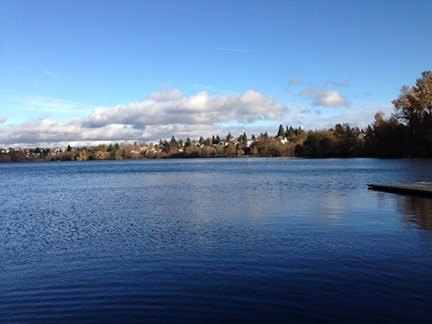
Green Lake? It looks blue to me.
By 2 PM, I was ready to go. We had a 20-minute walk back to the parking lot and I had a 10- or 15-minute drive to the Apple Store. I did not want to miss my appointment. I put my jacket on and said I needed to go. I guess I wasn’t the only one. Everyone else got up to leave, too.
We walked back together, chatting the whole time. By then, the weather had cleared considerably and it had turned into a really beautiful autumn day. I snapped a picture before saying goodbye to my companions and heading back to the truck. I took Penny for a quick walk, used my phone to get directions to the Apple Store, and got back on my way.
Apple Store, University Village
University Village turned out to be a very trendy outdoor shopping center. You know the kind — they spread the stores out in a big area with walkways and streets between them to simulate a town-like atmosphere. It was very pleasant but not very easy to navigate and a nightmare to find parking in when you’re driving something akin to a monster truck.
I did find a parking garage near the Apple Store. It said the clearance was 7 feet and I knew that was okay because the REI parking garage had been 7 feet, too. But in this garage, my radio antenna scraped on every single concrete beam I drove under and I felt myself ducking at more than a few of them. I found an end parking space on the second level and got out, leaving the windows cracked for Penny. She didn’t seem to mind staying behind again — I think she was exhausted from her 3-mile walk spent straining against a 5-foot leash.
The Apple Store was a big open space filled with iPads and iPhones and computers and people. I made my way to the Genius Bar in the back and signed in with an Apple staffer. I was 20 minutes early. He suggested I go grab a cup of coffee — Starbucks was nearby — but I told him I’d rather wait. I figured I’d update my iPad and iPhone apps using the store’s wifi connection. He put me at a table in front of a MacBook Pro and I got to work. I also used the computer to check the weather for my return trip.
Right on time a Genius showed up. We reviewed my issue and he ran a diagnostic on my phone. Sure enough, I now qualified for a warranty battery replacement. He told me it would take 30 to 40 minutes and suggested I come back at 4 PM.
I considered fetching Penny for a walk but decided against it. I felt like having a bite of real food to eat, comfort food, perhaps. The weather had turned gray and drizzly again and with just a danish, an energy bar, and two cups of coffee in my stomach all day, I was ready for something warm. I wandered around the “village” and found a pasta place. I ordered a Mac and Cheese and read a book on my iPad while I ate.
I returned at 4 PM sharp and inquired about my phone. The staffer typed a secret message on her iPod and, a few minutes later, someone handed her my phone. The battery had been replaced at had a 49% charge. I’d charge it on my way home. I used an Apple gift card I had to buy a charging adapter that I needed and left.
Quick and easy.
The Trip Home
Of course, by the time I left, it was after 4 PM. Although I couldn’t see the sunset, it happened right around then. By the time I turned onto I-90 it was starting to get dark.
It was also raining. It rained for most of the drive back, getting darker and darker until it was night. I don’t like driving at night anymore and try to avoid it. But with Washington’s short winter days, it’s not really an option unless you plan to spend much of your time at home. I don’t.
The temperature up in the pass was just above freezing. There were a lot more cars and trucks on the road, too. But again, it was a non-event. I descended down toward Ellensburg, ignoring MapQuest’s advice to get on route 97. I’d driven Blewett Pass once at night in dry conditions; there was no way I would do it at night in the rain with the possibility of ice.
I stopped in Ellensburg for fuel and to take Penny for a quick walk. I missed getting a cup of coffee in one of those coffee shacks so ubiquitous in the northwest by about 10 minutes.
The rain had stopped by the time I got back on I-90. The rest of the drive went by in a blur. I made a quick stop at Fred Meyer in East Wenatchee to return a RedBox video and then drove home. It was exactly 8 PM when I unlocked the door and went inside with Penny.
I’d been gone for about 13 hours and had gotten a lot done. I was nearly ready for ski season — I just needed some clothing items — and had gotten my phone repaired. I’d also met a bunch of smart, friendly people on a walk in a new place. It had certainly been worth the drive.


